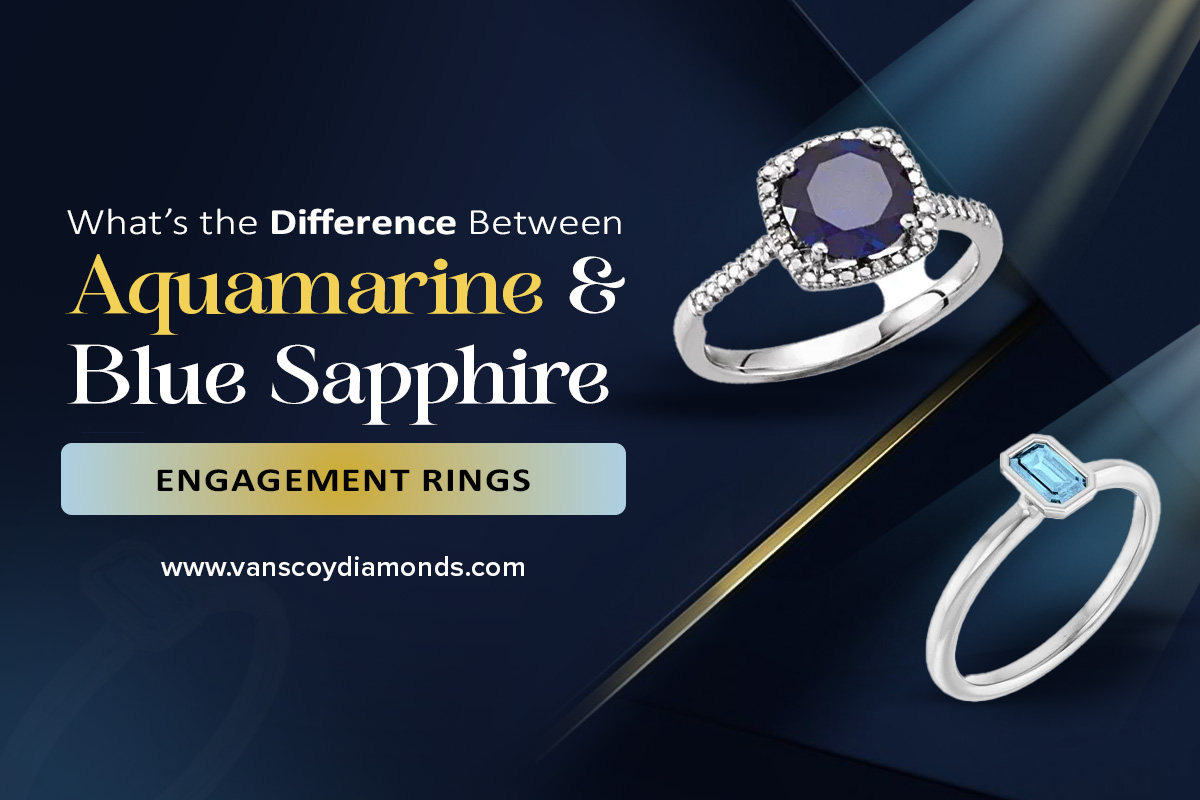When choosing a meaningful symbol of commitment, we often explore gemstone engagement rings that speak to both style and sentiment. At our showroom, aquamarine and blue sapphire are two popular options that continue to capture attention. As we guide others through these choices, it helps to understand how these stones differ in clarity, tone, durability, and meaning.
For those searching for the best store to buy diamond rings, knowing the distinct qualities of each gemstone can help shape a lasting decision.
Crystal Clarity: Transparency vs. Depth
Aquamarine is typically known for offering high levels of clarity. It tends to have fewer visible inclusions, allowing the stone to appear smooth and almost glass-like. This clarity can give aquamarine an airy, clean look that brings out its natural brightness.
Blue sapphire, on the other hand, may contain subtle inclusions—natural features that develop as the stone forms. These inclusions don’t take away from its appeal. Instead, they often add character and uniqueness. A blue sapphire doesn’t always aim for flawless clarity; instead, it carries a depth that adds to its visual richness.
Color Tones: Light and Ethereal vs. Rich and Deep
Aquamarine is often admired for its pale blue to blue-green tones. These soft, ocean-like shades tend to evoke calm and serenity. The lighter hue makes it an excellent choice for those who appreciate a gentle and soothing aesthetic.
Blue sapphires tend to display darker, more saturated shades of blue. They may range from deep royal blue to midnight hues, occasionally with a hint of violet. The intense coloring of sapphire creates a more dramatic appearance that many have come to associate with elegance and classic beauty.
Durability: Longevity Under Pressure
Durability plays a key role when selecting a gemstone for daily wear. Blue sapphire ranks high on the Mohs scale with a rating of 9, meaning it can resist scratches and maintain its polish through years of use. For those who plan to wear their ring daily, this level of hardness can provide added peace of mind.
Aquamarine scores slightly lower, typically between 7.5 and 8. While it is still a strong stone, it may require more care to avoid surface marks. With proper attention and thoughtful wear, an aquamarine ring can still hold its brilliance for a long time.
Symbolism: Meaning in Every Detail
Aquamarine is often associated with harmony, clarity, and calm. Its gentle tones are said to reflect peaceful energy, making it a thoughtful choice for a ring that represents emotional connection and balance.
Blue sapphire carries centuries of symbolism, often linked with truth, loyalty, and wisdom. Frequently used in regal jewelry, it’s a stone that’s known for its timeless expression of strength and sincerity. The richness of its color seems to reflect the depth of the commitment it represents.
Aesthetic and Emotional Value
Each stone carries a story. Aquamarine brings a sense of openness and lightness, often favored in minimalist and contemporary ring styles. Blue sapphire offers bold color and structure, lending itself to more traditional or vintage-inspired designs.
For those deciding between the two, it often comes down to the experience desired—whether it’s the serene elegance of aquamarine or the rich symbolism and strength of blue sapphire. Both options allow for personalized design choices that reflect individual taste and shared meaning.
Conclusion
Aquamarine and blue sapphire engagement rings differ in their clarity, color tone, durability, and emotional symbolism. Aquamarine may offer a softer, more tranquil look, while blue sapphire brings deeper hues and remarkable resilience.
As each ring tells its own story, choosing the right gemstone becomes a reflection of the values and beauty that matter most. For those exploring a wide range of gemstone rings, where to buy aquamarine and sapphire rings can often begin with a trusted name known for craftsmanship and selection.
Faq
-
Which is better for everyday wear: aquamarine or blue sapphire?
Blue sapphire is generally better suited for daily wear due to its higher rating on the Mohs scale (9 out of 10), making it extremely resistant to scratches and abrasions. Aquamarine, while still durable (7.5–8), may require more mindful care to preserve its surface and clarity over time. -
Do aquamarine and blue sapphire differ in price?
Yes, prices can vary significantly. Blue sapphires, especially those with deep, vivid color and few inclusions, tend to be more expensive due to their rarity and demand. Aquamarines are typically more affordable, particularly when considering stones with similar carat weights and clarity levels. -
Can both aquamarine and sapphire be used in custom engagement ring designs?
Absolutely. Both gemstones are versatile and work well with a variety of ring settings, from solitaires to vintage-inspired halos. Aquamarine is often chosen for minimalist or modern aesthetics, while blue sapphire pairs well with traditional or antique-style designs. -
What do aquamarine and blue sapphire symbolize in relationships?
Aquamarine symbolizes tranquility, emotional clarity, and harmonious love—ideal for couples who value peace and communication. Blue sapphire represents loyalty, wisdom, and enduring strength, often chosen to reflect a deep, unwavering commitment.



